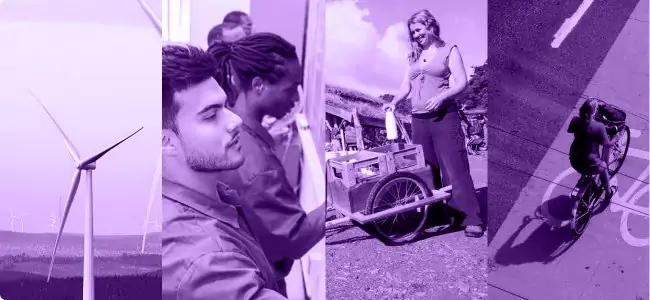The Science Behind Centuries-Old Infant Massage Techniques


Living Paradigms is a series about what we can learn from the customs and cultural practices of others when it comes to solving problems. It is sponsored by Wonderstruck.
In a small village in Uttar Pradesh, Sarita Devi sings to her newborn grandson. Sitting on the ground with the infant nestled into her lap, the 56-year-old massages him with oil from her kitchen. He yawns as she gently stretches his legs and massages around the umbilical cord. Finally, she wraps him in a blanket and he goes to sleep in the sun.
“I learned how to massage newborns from my mother when my babies were born,” she says. “At birth, babies are stressed as they emerge from the warmth of the mother’s womb into the cold world. Massage soothes them, helps their bones to develop … It is the best way to welcome a baby into the world.”
Massage therapy has been a part of traditional Indian newborn care since time immemorial. Massaging newborns is often entrusted to grannies and other female caregivers like Devi, and, in North India, sometimes to women belonging to the barber caste locally called nouns. They massage newborns with locally available oil, often mustard, which is sometimes mixed with grains and herbs into a paste known as bukwa. The practice is so widespread that a 2020 study found that almost 94 percent of families polled practiced some form of massage on their newborns.

In fact, the world over, caregivers massage newborns using a variety of techniques and oils. The Chinese believe that massage harmonizes yin and yang in newborns and promotes long life, wisdom and inner calm, while Latin American mothers believe it wards off the “mal de ojo”, or the evil eye. The Inuit massage seal oil to make the newborn more resilient to their harsh winters, while some African communities believe that a well-massaged baby will be smarter, stronger — and even more fertile — in adulthood.
Modern science also suggests massage benefits newborns, although it’s important for caregivers to consult with a paediatrician before making massage a part of infant care.
“The literature on early childhood development suggests that every aspect of this traditional massage can be beneficial,” says medical research scientist Vishwajeet Kumar, founder of Community Empowerment Lab in the north Indian state of Uttar Pradesh. “When you massage a baby, the oil lubricates the skin and relaxes the muscles. You stimulate the skin, make eye contact and maybe even sing a song, or tell a story. In short, you engage all the baby’s senses and this is crucial for development.”
A review of 11 studies on massage therapy’s potential for growth and development among infants under nine months found that it can impact everything from body weight and length to speech and visual-motor coordination. Newborn skin plays a crucial role as a barrier to infections and in preventing heat and water loss, but it is thinner and more permeable than adult skin and can take up to 12 months to mature. Oil massage can prevent skin dryness, to which newborns, freshly out of an ultra-moist womb, are especially vulnerable. Some of the oil is absorbed by the skin and into the bloodstream, adding to the infant’s nutrition. Other studies show that infants who are massaged sleep better and remain more alert while awake. Moreover, massage is potent touch therapy, which enhances the mother-baby bond, relieves colic and other pain, and can even prevent or reduce postpartum depression.
Despite so many proven benefits and having been around for centuries, oil massage, or emollient therapy of newborns, has entered mainstream medical discourse only recently. In the last three decades, medical researchers have been determining what safe newborn massage looks like and identifying the parameters under which it works most optimally.
The most significant of these studies was sparked by a visit to India and Bangladesh in the early 2000s by a team of public health researchers who wanted to observe how rural families looked after newborns. Kumar was on that team, and so was the present associate dean for maternal and child health at Stanford Medicine, Gary Darmstadt. They found that there were two post-birth practices that were traditionally followed in this region: Breastfeeding and massage. While the benefits of breastfeeding were well documented, massage had not been put under similar scientific scrutiny.
Initially, Darmstadt and Kumar felt there must “be something” in massage as it was so widespread and so rooted in centuries of folk wisdom. But they were disconcerted by the lack of prescribed massage protocols. Like Devi, most mothers and caregivers simply learned massage techniques from their elders. This resulted in significant differences in practice and, in some cases, adverse effects like bone dislocations and even fractures, as well skin damage. “Some lightly oiled the newborn, others exerted enough pressure to make them cry out loud. Most used mustard oil, which was often rubbed until the skin turned red,” Darmstadt recalls. His early training as a dermatologist led him to be wary of mustard oil, which could potentially irritate the skin and had also been found to sometimes contain neurotoxic contaminants.
Darmstadt questioned the use of any easily available oil for infant massage. “There seemed to be kind of a belief that any oil would do … And they were mostly using oils pulled off the shelf of a local store or oil press,” he says.
This inspired his three-decade quest to tweak tradition using evidence-based science to codify protocols for infant oil massage and find the optimal oil for it. “I brought back samples of oil from South Asia — mustard, olive, soybean, corn and sunflower seed oil to study,” he says. His research identified one oil that moisturized infant skin, kept it hydrated for long periods, and even reduced sepsis and neonatal mortality rates of hospitalized premature infants: Sunflower seed oil (SSO).

The magic ingredient that sets SSO apart from other oils is linoleic acid. It’s an essential fatty acid that humans do not produce, but its effects on skin health are well documented. “We realized using this oil could potentially accelerate the development of the skin, especially in preterm babies,” Darmstadt says. So with a team of researchers including Kumar, he conducted a community-level clinical trial with over 26,000 infants (full-term and pre-term) to investigate the effects of SSO therapy with traditional massage practices. The study found no significant difference in neonatal mortality rates overall, but recorded a 52 percent reduction in neonatal deaths among very low-birth-weight infants who received SSO therapy, compared to those who received mustard oil massages.
The results were inconclusive, owing in part to the fact that in a community-based trial, with many infants being taken care of at home, researchers were not able to control the massage practices followed. In fact, merely 30.4 percent of the intervention group reported using sunflower seed oil exclusively, as per the design of the study. But based on its results and further research, in 2022 the World Health Organization concluded that emollient therapy could be considered for the treatment of preterm or low-birth-weight babies, although it called for additional research on its effects, dosing and mode of application.
Darmstadt has now developed a sunflower seed oil with optimal amounts of linoleic acid for infant massage, and is hoping to get a nod from the U.S. Food and Drug Administration toward the end of 2025.
Back in north India, at the Government Medical College in Chandigarh, Suksham Jain, a professor of neonatology, keeps watch over the infants in her neonatal intensive care unit. Weighing below 800 grams (1.76 pounds) and born between 26 to 32 weeks of gestation, they are markedly small. “For the last 15 years, we’ve been applying oil on the babies in our care,” Jain says. This moisturizes and conditions their fragile skin. “But we’d leave it to the family to follow their own massage practice once they’d left the hospital,” she says.
Jain is presently conducting a clinical trial in her NICU that compares the outcomes of simple oil (mostly coconut) application with those of a standardized massage in preterm babies. Consequently, her NICU holds training sessions in newborn massage for parents and caregivers participating in the trial. Her team has also developed posters with visual step-by-step instructions for massage.


Wait, you're not a member yet?
Join the Reasons to be Cheerful community by supporting our nonprofit publication and giving what you can.
Join Cancel anytimeThe trial will continue until early 2026, but Jain’s clinical observations so far suggest that babies who have been massaged are gaining weight faster than the ones in the control group on whom the oil is simply being applied. She says that massage might be reducing their stress, which in turn could be helping them to sleep and feed better. Moreover, parents who have been trained to massage their tiny preemies feel good, she notes, and “are able to connect with the child more.”
Back in the sleepy village in Uttar Pradesh where Devi lives, her grandson wakes up with a loud wail. She croons to him, gently massaging his stomach “to ease colic pain,” she says. The baby promptly goes to sleep.
“Massage works,” she says, “but people say my hands have magic in them!”






Please be good and do not spam. Thank you.